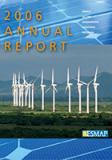Publications
Overview of the Global Energy Sector. During ESMAP’s previous Strategic Business Plan period, a number of significant world events have impacted the global energy sector, including the continuing world economic and financial crisis, the debt crisis in Europe, and far‐reaching political change in the Middle East. Yet the world’s need for primary energy has remained high due to a major shift in demand toward rapidly growing developing countries.
The International Energy Agency (IEA) projects that global energy demand will continue to grow by one‐ third from 2010 to 2035. Technological progress in the energy sector has continued apace. Shale gas, the biggest energy innovation in decades, is dramatically changing the competitive positions for everything from renewable energy to nuclear power. The past decade has seen an innovation‐driven rebirth of renewable energy sources, which now account for about 17% of global energy consumption. Meanwhile, renewable energy sources have become large global industries in themselves. Prices of the leading renewable energy technologies are falling currently, bringing renewable energy technologies closer to parity with fossil fuels (LCOE in large interconnected networks is currently within a US$50‐110 per MWh band). Levelized cost of onshore wind electricity is falling thanks to competition in manufacturing and hub height increase to bring efficiency in power production, reaching US$60‐150 per MWh. Grid connected photovoltaic (PV) LCOE is also dropping (US$160‐350 per MWh), thanks to manufacturing competition leading to PV cristalline‐silicone modules selling at US$0.75 per W in Sept 2012, a 60% decrease compared to 24 months back. Although the value remains high compared to alternatives, concentrated solar thermal LCOE is also reducing (US$180‐270 per MWh), thanks to new plants using tower technology and thermal storage systems. Yet, after years of staggering growth, the renewable energy industry has entered a period of uncertainty lately. Much of the clean energy sector is still unable to scale up sufficiently to compete with conventional energy sources without the help of government subsidies. The renewable energy sector has been vulnerable to substantial subsidy cutbacks in these times of fiscal restraint.
In 2010, global subsidies for renewable energy totaled US$66 billion, compared to US$409 billion in subsidies for fossil fuels (IEA, BNEF). This has created a new challenge of putting the renewable energy industry on firmer footing by progressively delinking it from government subsidies that are prone to weaken or disappear. Events of the past five years have demonstrated that non‐OECD countries will play an increasing role in shaping the energy market dynamics, as these countries are projected to account for 70% of the increase in economic output and 90% of energy demand growth from 2010 and 2035. China is already the world’s largest energy consumer. A number of developing countries are following in China’s footsteps, with the pace of energy demand outpacing China in India, Indonesia, Brazil, and the Middle East.
World Bank. 2013. Energy Sector Management Assistance Program (ESMAP): Business Plan - FY2014-16. ESMAP. Washington DC; World Bank Group. http://documents.worldbank.org/curated/en/884911468347338645/Energy-Sector-Management-Assistance-Program-ESMAP-business-plan-FY2014-16




